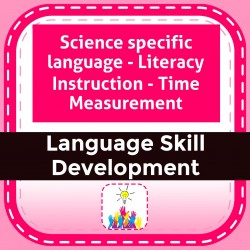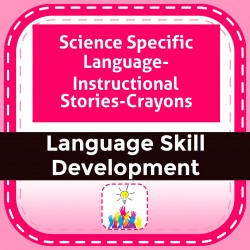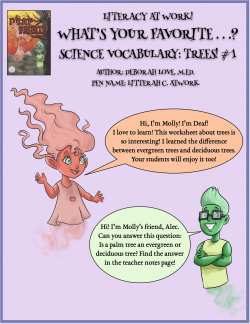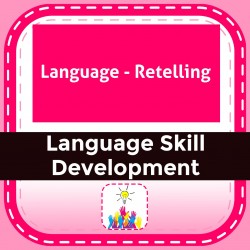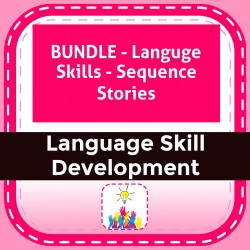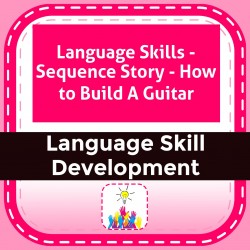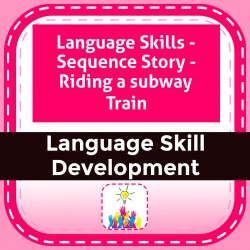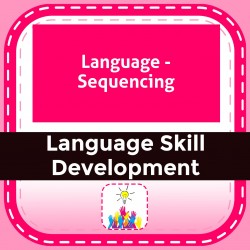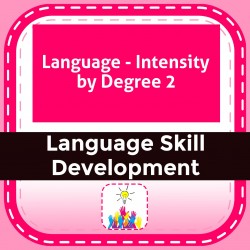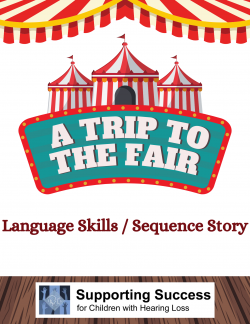Ability Levels
Categories
Resource Types
Age/Grade Range
CCSS
Anchor Standard
Speaking & Listening
Language
Reading
Science specific language - Literacy Instruction - Time Measurement
$ 195
Scientific study is the observation and measurement of change. Use these instructional strategies to teach students the basic scientific units of time (standard and metric). Activities include exami
...
ning root parts such as "chrono," " -ology," reading comprehension and critical thinking, and ideas for extension lessons and student research.
Science Specific Language- Instructional Stories-Crayons
$ 195
There are 11 basic color words in the English language: "black", "white", "red", "green", "yellow", "blue", "brown", "orange", "pink", "purple", and "gray". The rest are variations of that color. The
...
se instructional strategies and activities are a great tool to use for understanding color words, the chemistry of color, describing objects, and extending an art or science lesson. These activities could also serve as an introduction to color vocabulary.
SCIENCE VOCAB: TREES! #1
$ 0
Domain Specific Science Vocabulary: EVERGREEN AND DECIDUOUS TREES!Want a clever way to increase students' science vocabulary? Use this worksheet at any time during the school year or as the holidays a
...
re approaching when decorating a tree is a tradition for many. This worksheet can be used as a warm-up to the school day, in-between activities, for a group of students, or for individuals.In my many years of working as an educational interpreter, I noticed that it was not unusual for deaf and hard-of-hearing students who were behind their peers struggle with answering questions that began with: "What's your favorite . . .?" Often, they would answer "yes" or not be sure how to answer. The beauty of this type of worksheet is that there is no wrong answer, it is short-yet-effective, and it exposes students to a variety of categories and vocabulary within a specific domain. If time allows, it can open up a discussion on the topic. As a bonus, I added an extra page full of discussion prompts and fun facts. Over time, this type of worksheet will help students learn how to answer this common question that seems easy on the surface, but not for those who do not have the background knowledge and vocabulary necessary to answer it.The thumbnail for this “What’s Your Favorite?” series has a violet purple background - violet for vocabulary! Looking for fast and easy vocabulary building worksheets? Look for the violet thumbnails! Like the "What's Your Favorite...?" worksheet series? Leave me a comment so that I know you would like more!Debbie Love, M.Ed.
Language - Retelling
$ 295
Explanation to parents and teachers about the importance of retelling and sequencing events. Worksheets include: sequencing stages of a butterfly, retelling events of the school day, finding the begin
...
ning, middle and ending of a story, fiction and non-fiction reader response forms.
BUNDLE - Languge Skills - Sequence Stories
$ 795
This BUNDLE of 8 instructional strategies uses topical sequence stories to develop and expand language knowledge. Topics are: a trip on a ferryboat, a trip to the beach, a trip to the fair, building a
...
computer, growing a pumpkin patch, how to build a guitar, riding a subway train, a trip through a lock.
Language Skills - Sequence Story - How to Build A Guitar
$ 195
Sequencing information is a critical skill in understanding stories, categorizing, and language processing. This story contains reading and sequencing activities that can be used at a basic and Inter
...
mediate and/or advanced level. Visuals are provided to aid in understanding.
Language Skills - Sequence Story - Riding a subway Train
$ 195
Sequencing information is a critical skill in understanding stories, categorizing, and language processing. This story contains reading and sequencing activities that can be used at a basic and Inter
...
mediate and/or advanced level. Visuals are provided to aid in understanding.
Language - Sequencing
$ 395
An explanation of the Importance of sequencing skills. Worksheets include: Hungry Caterpillar (Eric Carle) activity for pre-K; patterning worksheet; sequence steps in changing hearing aid batteries;
...
sequence steps in earmold cleaning; practice telling earlier and later times; sequence events in a school day; sequence events in a story, sequencing idioms
Language - Intensity by Degree 2
$ 195
Explains that intensity represents a change in complexity for any area of learning. Uses visualizing, rating scales, sequencing, and graphic organizers.
Language Skills - Sequence Story - A Trip to the Fair
$ 0
Sequencing information is a critical skill in understanding stories, categorizing, and language processing. This story contains reading and sequencing activities that can be used at a basic and Inter
...
mediate and/or advanced level. Visuals are provided to aid in understanding.
 Your browser is out of date. For best experience switch to latest updated Browser.
Your browser is out of date. For best experience switch to latest updated Browser.
 Get Chrome
Get Chrome Get Edge
Get Edge Get Firefox
Get Firefox